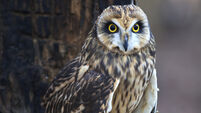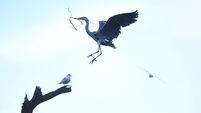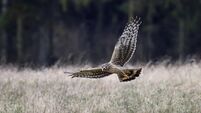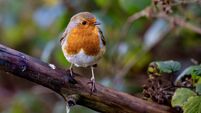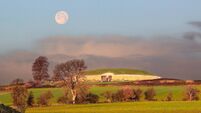Birds of Ireland: Wren
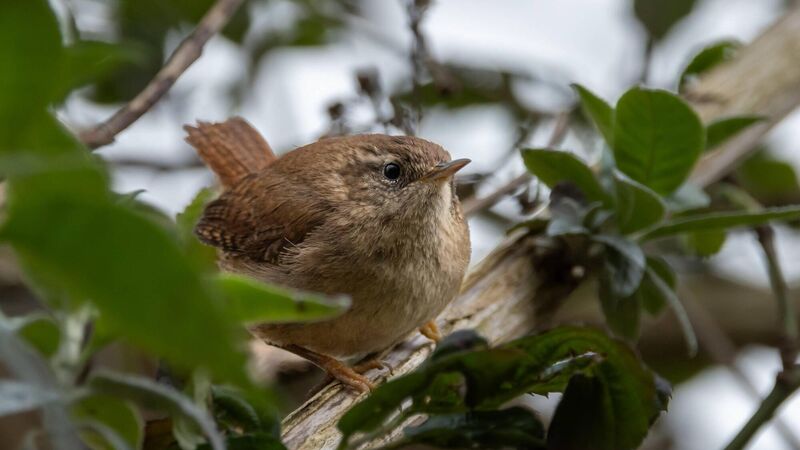
Eurasian wren [Troglodytes troglodytes]
- Wren (Dreoilín / Troglogytes troglodytes)
- 9-10 cm in length with a wingspan of 14-16cm
Wrens can be seen here all year round and are a common breeding species.
Their habitat is woodland, farmland, and gardens across Ireland.
Wrens are a tiny, rusty-brown bird, smaller than a blue tit. They often cock their tails up so high it almost touches the back of their heads.

Wrens of all ages are brown lookking, pale supercilium ('eyebrow' stripe which runs from the base of the bird's beak above its eye, finishing somewhere towards the rear of the bird's head), some dark bars and pale spots on short wings.
They have a fairly long, thin, downcurved beak and long, thin yellow-brown legs.
In flight you can see wrens' short, rounded wings — and they have a low, straight, buzzing flight.
A wren's song is very loud, high, and energetic — it cocks its tail when singing. Wrens have a variety of calls, the most noticeable being a loud short , often repeated many times in an irregular, mechanical fashion.
If you spot a bird you can't instantly identify, write down a description. You won't be able to remember complicated plumage details... blue may become green, grey may turn to black, streaking disappears, and size and shape becomes distorted.
Making a quick sketch of any mystery bird you see is also very valuable. With a little practice, you can record a large amount of information about a bird in this way in a short space of time.
You do not need a degree in art. In fact, you do not need to able to to draw well at all. If you think about it, if you wanted to give someone directions you would probably draw a map rather than have them remember the directions in their head.
When identifying birds, it is the same thing — think of your humble sketch as a map rather than a work of art.




